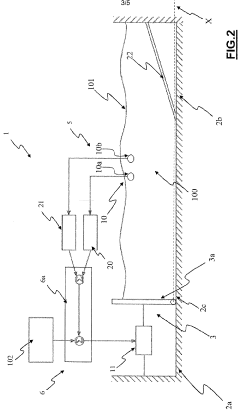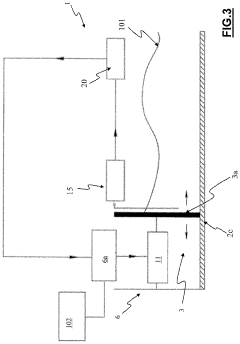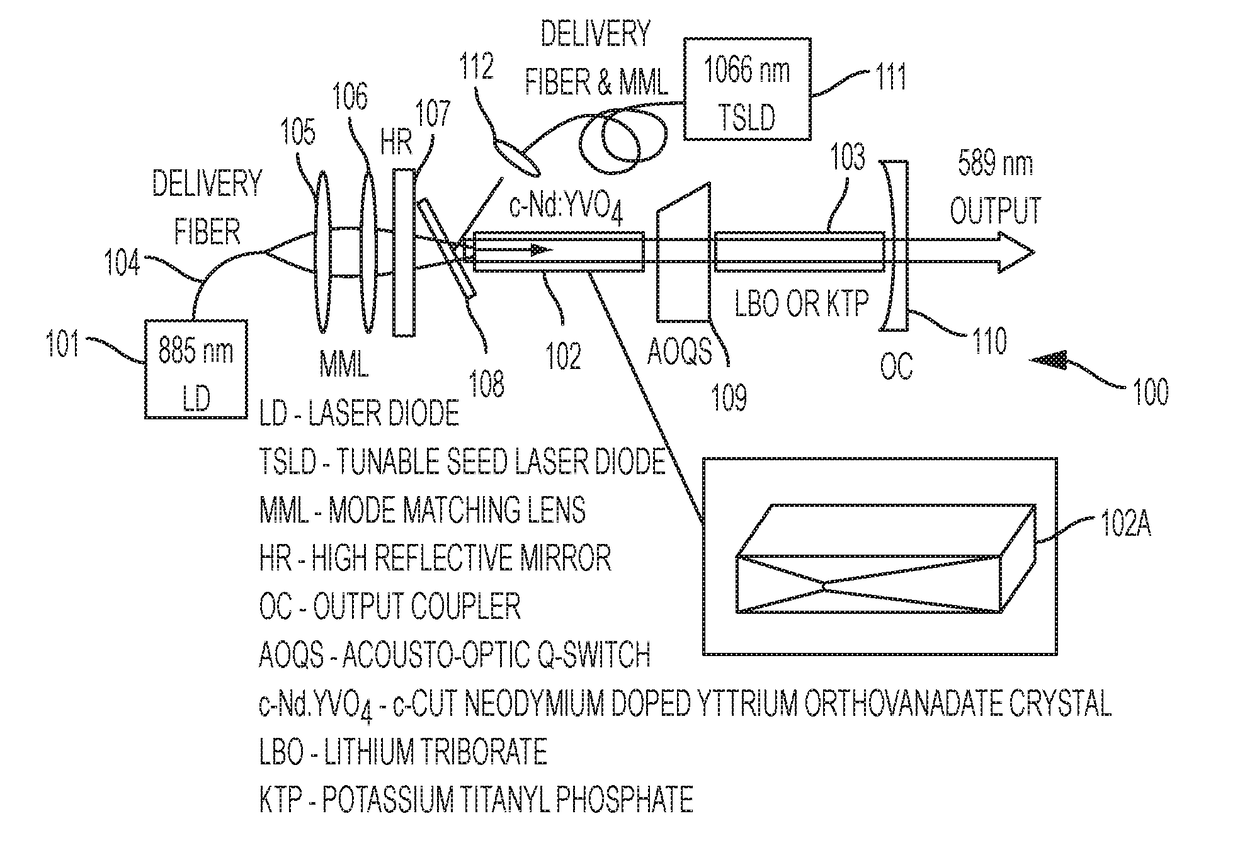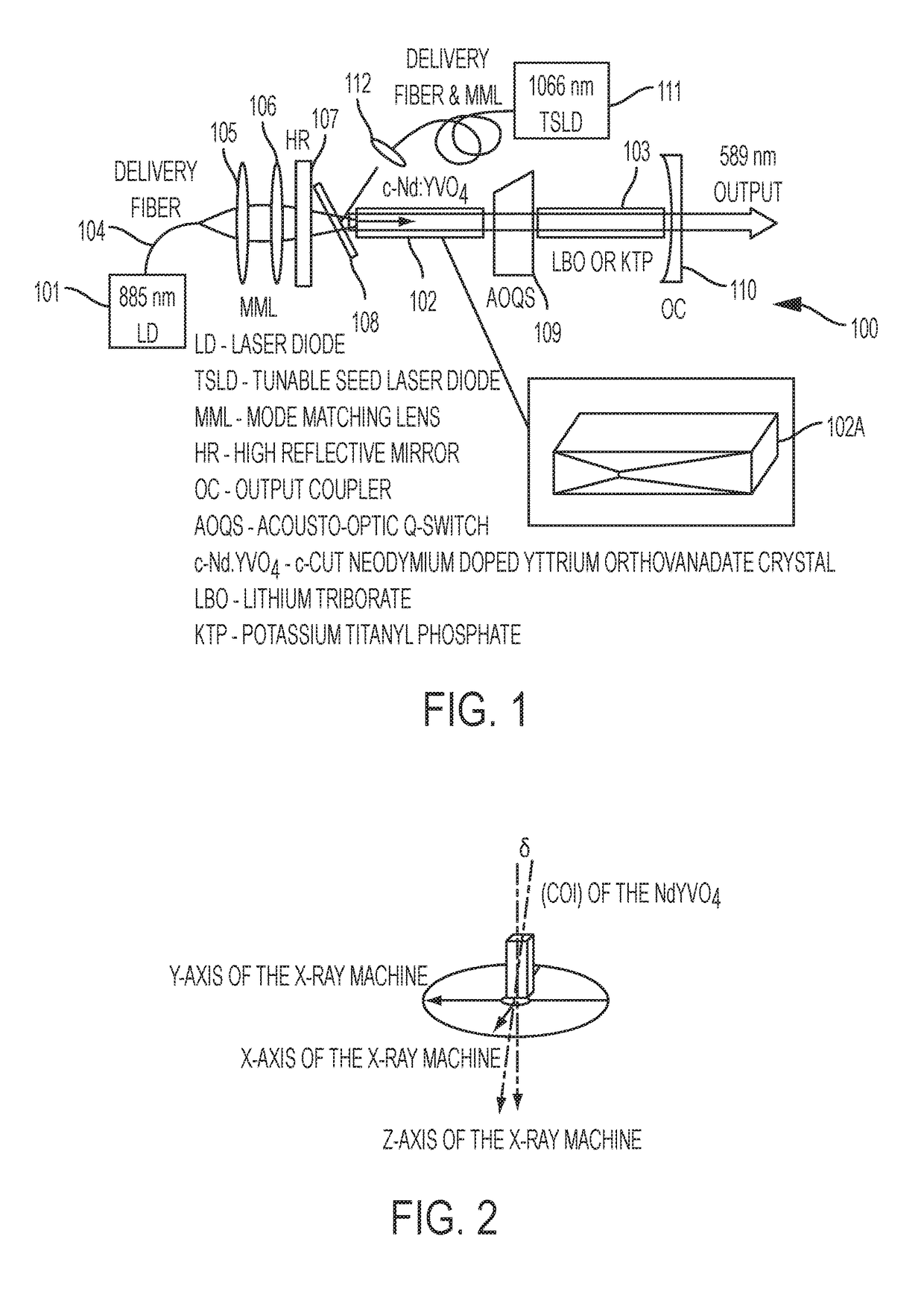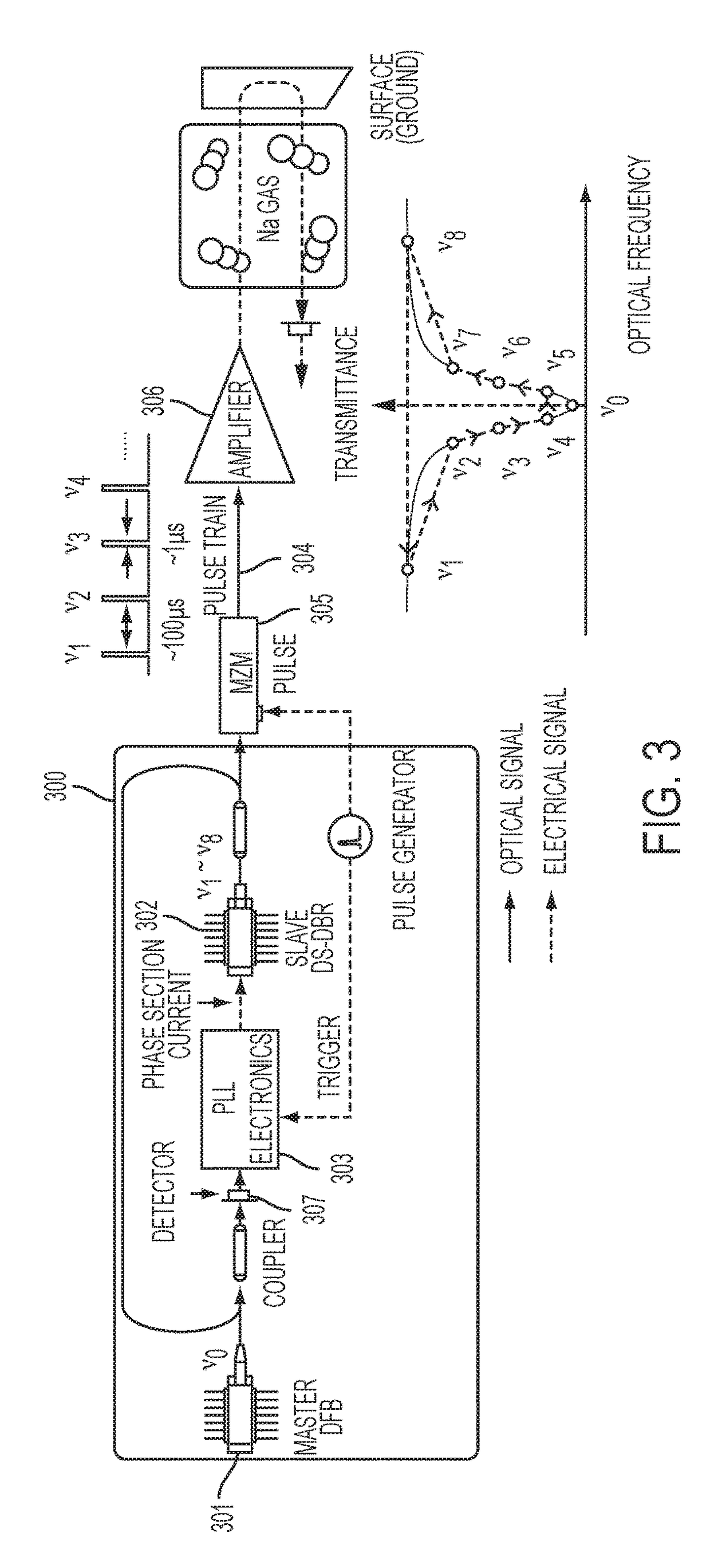Longitudinal wave propagation in microgravity environments
AUG 13, 20259 MIN READ
Generate Your Research Report Instantly with AI Agent
Patsnap Eureka helps you evaluate technical feasibility & market potential.
Microgravity Wave Dynamics
Microgravity environments present unique conditions for wave propagation, particularly for longitudinal waves. In these settings, the absence of significant gravitational forces alters the behavior of waves in ways that are not observed under normal terrestrial conditions. The study of wave dynamics in microgravity is crucial for understanding various phenomena in space and has implications for both scientific research and technological applications.
In microgravity, the propagation of longitudinal waves is primarily influenced by the elastic properties of the medium and the absence of buoyancy-driven convection. This leads to more uniform wave propagation patterns and reduced damping effects compared to Earth-bound environments. The lack of gravitational settling allows for the formation of more stable and long-lasting wave structures, enabling researchers to observe and analyze wave behaviors that would be difficult or impossible to study on Earth.
One of the key characteristics of longitudinal wave propagation in microgravity is the enhanced role of surface tension and capillary forces. These forces become dominant in the absence of gravity, leading to unique wave behaviors in fluids and soft materials. For instance, in liquid bridges or floating zones, longitudinal waves can propagate with minimal distortion, allowing for precise measurements of fluid properties and the study of interfacial phenomena.
The absence of hydrostatic pressure gradients in microgravity also affects the propagation of longitudinal waves in gases and plasmas. This results in more uniform wave propagation and the potential for longer-range transmission of acoustic signals. Additionally, the lack of natural convection currents allows for the study of pure diffusion-driven processes, which can significantly impact wave propagation in certain media.
Microgravity wave dynamics also play a crucial role in understanding the behavior of materials in space environments. The propagation of longitudinal waves through solid materials in microgravity can provide insights into their elastic properties and internal structures without the confounding effects of gravitational stress. This has implications for materials science research and the development of advanced materials for space applications.
Furthermore, the study of longitudinal wave propagation in microgravity environments has practical applications in space exploration and technology. It is essential for developing accurate acoustic measurement techniques for use in spacecraft and space stations, as well as for understanding the behavior of fluids and gases in propulsion systems and life support equipment under microgravity conditions.
In microgravity, the propagation of longitudinal waves is primarily influenced by the elastic properties of the medium and the absence of buoyancy-driven convection. This leads to more uniform wave propagation patterns and reduced damping effects compared to Earth-bound environments. The lack of gravitational settling allows for the formation of more stable and long-lasting wave structures, enabling researchers to observe and analyze wave behaviors that would be difficult or impossible to study on Earth.
One of the key characteristics of longitudinal wave propagation in microgravity is the enhanced role of surface tension and capillary forces. These forces become dominant in the absence of gravity, leading to unique wave behaviors in fluids and soft materials. For instance, in liquid bridges or floating zones, longitudinal waves can propagate with minimal distortion, allowing for precise measurements of fluid properties and the study of interfacial phenomena.
The absence of hydrostatic pressure gradients in microgravity also affects the propagation of longitudinal waves in gases and plasmas. This results in more uniform wave propagation and the potential for longer-range transmission of acoustic signals. Additionally, the lack of natural convection currents allows for the study of pure diffusion-driven processes, which can significantly impact wave propagation in certain media.
Microgravity wave dynamics also play a crucial role in understanding the behavior of materials in space environments. The propagation of longitudinal waves through solid materials in microgravity can provide insights into their elastic properties and internal structures without the confounding effects of gravitational stress. This has implications for materials science research and the development of advanced materials for space applications.
Furthermore, the study of longitudinal wave propagation in microgravity environments has practical applications in space exploration and technology. It is essential for developing accurate acoustic measurement techniques for use in spacecraft and space stations, as well as for understanding the behavior of fluids and gases in propulsion systems and life support equipment under microgravity conditions.
Space Exploration Needs
The exploration of space presents unique challenges and opportunities for scientific research and technological advancement. In the context of longitudinal wave propagation in microgravity environments, there are several critical needs that space exploration missions must address. Firstly, understanding the behavior of sound waves in microgravity is essential for developing effective communication systems within spacecraft and space stations. Traditional acoustic principles may not apply in the same way as they do on Earth, necessitating new approaches to audio transmission and reception.
Moreover, the study of longitudinal wave propagation in microgravity can provide valuable insights into the fundamental physics of wave mechanics. This knowledge can be applied to improve various space-based technologies, including propulsion systems, structural health monitoring of spacecraft, and even potential future applications in space-based manufacturing processes.
Another crucial aspect is the development of advanced sensors and measurement tools capable of accurately detecting and analyzing longitudinal waves in the absence of gravity. These instruments must be highly sensitive and resistant to the harsh conditions of space, including extreme temperatures, radiation, and vacuum environments. Such tools are not only vital for scientific experiments but also for ensuring the safety and integrity of space habitats and vehicles.
The need for efficient energy transfer mechanisms in space is another area where understanding longitudinal wave propagation becomes significant. In microgravity, conventional methods of energy transfer may be less effective, and novel approaches based on wave propagation could offer innovative solutions for power distribution and thermal management in spacecraft systems.
Furthermore, the study of longitudinal waves in microgravity environments has potential applications in materials science. The behavior of materials under these unique conditions can lead to the development of new composites and structures optimized for space applications. This research could result in lighter, stronger materials for spacecraft construction, enhancing payload capacity and mission duration.
Lastly, the exploration of longitudinal wave propagation in microgravity has implications for human health and well-being during long-duration space missions. Understanding how these waves interact with biological systems in the absence of gravity could lead to advancements in medical diagnostics and treatments specifically tailored for astronauts, addressing issues such as bone density loss and muscle atrophy.
Moreover, the study of longitudinal wave propagation in microgravity can provide valuable insights into the fundamental physics of wave mechanics. This knowledge can be applied to improve various space-based technologies, including propulsion systems, structural health monitoring of spacecraft, and even potential future applications in space-based manufacturing processes.
Another crucial aspect is the development of advanced sensors and measurement tools capable of accurately detecting and analyzing longitudinal waves in the absence of gravity. These instruments must be highly sensitive and resistant to the harsh conditions of space, including extreme temperatures, radiation, and vacuum environments. Such tools are not only vital for scientific experiments but also for ensuring the safety and integrity of space habitats and vehicles.
The need for efficient energy transfer mechanisms in space is another area where understanding longitudinal wave propagation becomes significant. In microgravity, conventional methods of energy transfer may be less effective, and novel approaches based on wave propagation could offer innovative solutions for power distribution and thermal management in spacecraft systems.
Furthermore, the study of longitudinal waves in microgravity environments has potential applications in materials science. The behavior of materials under these unique conditions can lead to the development of new composites and structures optimized for space applications. This research could result in lighter, stronger materials for spacecraft construction, enhancing payload capacity and mission duration.
Lastly, the exploration of longitudinal wave propagation in microgravity has implications for human health and well-being during long-duration space missions. Understanding how these waves interact with biological systems in the absence of gravity could lead to advancements in medical diagnostics and treatments specifically tailored for astronauts, addressing issues such as bone density loss and muscle atrophy.
Challenges in Microgravity
Conducting research on longitudinal wave propagation in microgravity environments presents unique challenges that stem from the absence of gravity and the altered physical conditions in space. One of the primary difficulties is the lack of natural convection, which significantly affects heat transfer and fluid dynamics. This absence of convection can lead to unexpected behavior in wave propagation, particularly in fluid-based experiments.
The reduced gravity environment also impacts the behavior of particles and fluids, altering their natural tendencies to settle or mix. This can affect the medium through which longitudinal waves propagate, potentially leading to non-uniform wave transmission and unexpected interference patterns. Researchers must develop novel methods to maintain homogeneous mediums or account for these variations in their experimental designs.
Another significant challenge is the limited availability of experimental platforms in microgravity conditions. While the International Space Station (ISS) provides a valuable research environment, access is restricted and experiment durations are often constrained. This limitation necessitates the development of compact, efficient experimental setups that can yield meaningful results within these constraints.
The harsh space environment itself poses additional challenges. Radiation exposure can interfere with sensitive measurement equipment, potentially skewing results or damaging experimental apparatus. Researchers must design robust systems capable of withstanding these conditions while maintaining precision in data collection and analysis.
Vibrations from spacecraft systems and crew movements can introduce unwanted noise into experiments, particularly problematic for studying subtle wave phenomena. Isolating experiments from these disturbances requires sophisticated vibration dampening systems, adding complexity to experimental setups.
The remote nature of space-based experiments introduces challenges in real-time data collection and experiment control. Researchers must develop autonomous systems capable of adjusting parameters and responding to unexpected results without direct human intervention. This requirement for autonomy adds another layer of complexity to experimental design and execution.
Lastly, the high cost and limited opportunities for microgravity research necessitate extensive ground-based simulations and preparations. Developing accurate models that can predict behavior in microgravity based on Earth-bound experiments is crucial but inherently challenging due to the fundamental differences in environmental conditions.
The reduced gravity environment also impacts the behavior of particles and fluids, altering their natural tendencies to settle or mix. This can affect the medium through which longitudinal waves propagate, potentially leading to non-uniform wave transmission and unexpected interference patterns. Researchers must develop novel methods to maintain homogeneous mediums or account for these variations in their experimental designs.
Another significant challenge is the limited availability of experimental platforms in microgravity conditions. While the International Space Station (ISS) provides a valuable research environment, access is restricted and experiment durations are often constrained. This limitation necessitates the development of compact, efficient experimental setups that can yield meaningful results within these constraints.
The harsh space environment itself poses additional challenges. Radiation exposure can interfere with sensitive measurement equipment, potentially skewing results or damaging experimental apparatus. Researchers must design robust systems capable of withstanding these conditions while maintaining precision in data collection and analysis.
Vibrations from spacecraft systems and crew movements can introduce unwanted noise into experiments, particularly problematic for studying subtle wave phenomena. Isolating experiments from these disturbances requires sophisticated vibration dampening systems, adding complexity to experimental setups.
The remote nature of space-based experiments introduces challenges in real-time data collection and experiment control. Researchers must develop autonomous systems capable of adjusting parameters and responding to unexpected results without direct human intervention. This requirement for autonomy adds another layer of complexity to experimental design and execution.
Lastly, the high cost and limited opportunities for microgravity research necessitate extensive ground-based simulations and preparations. Developing accurate models that can predict behavior in microgravity based on Earth-bound experiments is crucial but inherently challenging due to the fundamental differences in environmental conditions.
Current Microgravity Solutions
01 Acoustic wave propagation in medical imaging
Longitudinal wave propagation is utilized in medical imaging technologies, particularly in ultrasound devices. These systems use acoustic waves to create images of internal body structures, enabling non-invasive diagnostics and monitoring. The propagation of these waves through various tissues allows for the detection and visualization of different anatomical features.- Acoustic wave propagation in medical imaging: Longitudinal wave propagation is utilized in medical imaging technologies, particularly in ultrasound devices. These systems use acoustic waves to create images of internal body structures, enabling non-invasive diagnostic procedures. The propagation of these waves through various tissues allows for the detection and visualization of different anatomical features.
- Electromagnetic wave propagation in communication systems: Longitudinal wave propagation principles are applied in the design and optimization of communication systems. This includes the transmission and reception of electromagnetic waves for wireless communication, antenna design, and signal processing techniques to improve data transmission efficiency and reliability over various distances and through different mediums.
- Seismic wave propagation analysis: The study of longitudinal wave propagation is crucial in seismology and geophysics. Analyzing the propagation of seismic waves through the Earth's layers provides valuable information about the planet's internal structure, helps in earthquake prediction, and aids in the exploration of natural resources such as oil and gas deposits.
- Optical fiber wave propagation: Longitudinal wave propagation principles are applied in the design and optimization of optical fiber systems. This includes the transmission of light waves through fiber optic cables for high-speed data communication, sensing applications, and the development of advanced photonic devices that manipulate light propagation for various technological applications.
- Wave propagation modeling and simulation: Advanced computational techniques and algorithms are developed to model and simulate longitudinal wave propagation in various media. These models help in predicting wave behavior, optimizing system designs, and understanding complex wave interactions in fields such as acoustics, electromagnetics, and materials science.
02 Electromagnetic wave propagation in communication systems
Longitudinal wave propagation principles are applied in various communication systems, including wireless and optical networks. These systems utilize electromagnetic waves to transmit information over long distances. The study of wave propagation characteristics helps in optimizing signal transmission, reducing interference, and improving overall communication efficiency.Expand Specific Solutions03 Seismic wave propagation analysis
Longitudinal waves play a crucial role in seismic wave propagation analysis, which is essential for geological studies and earthquake monitoring. These waves travel through the Earth's layers, providing valuable information about subsurface structures and properties. Advanced techniques are used to analyze and interpret seismic wave data for various applications in geophysics and seismology.Expand Specific Solutions04 Wave propagation modeling and simulation
Computational methods and algorithms are developed to model and simulate longitudinal wave propagation in various media. These simulations help in understanding complex wave behaviors, predicting propagation patterns, and optimizing designs in fields such as acoustics, electromagnetics, and structural engineering. Advanced modeling techniques enable more accurate predictions of wave interactions with different materials and structures.Expand Specific Solutions05 Wave propagation in material characterization
Longitudinal wave propagation is utilized in non-destructive testing and material characterization techniques. By analyzing how waves propagate through different materials, properties such as elasticity, density, and internal structure can be determined. This approach is valuable in quality control, materials science, and structural health monitoring applications across various industries.Expand Specific Solutions
Key Space Research Entities
The longitudinal wave propagation in microgravity environments is an emerging field of research, currently in its early developmental stages. The market for this technology is relatively small but growing, driven by increasing space exploration activities and microgravity experiments. The technical maturity is still evolving, with key players like NASA, Hitachi, and Thales SA leading research efforts. Universities such as Tsinghua, Peking, and National Taiwan University are contributing to fundamental research, while companies like Canon and Toshiba are exploring potential applications in sensing and imaging technologies. As the field progresses, we can expect increased collaboration between academic institutions and industry partners to advance practical applications in space-based research and technology development.
Institute of Geology & Geophysics, Chinese Academy of Sciences
Technical Solution: The Institute has developed innovative methods for studying longitudinal wave propagation in simulated microgravity environments. They utilize drop towers and parabolic flights to create short-duration microgravity conditions[4]. Their approach combines high-precision accelerometers with advanced signal processing techniques to isolate and analyze longitudinal waves during these brief periods of weightlessness. The Institute has also pioneered the use of magnetic levitation to simulate microgravity effects on wave propagation in various materials[5]. Their research extends to studying how reduced gravity affects seismic wave propagation, which has implications for understanding the internal structure of celestial bodies[6].
Strengths: Innovative simulation techniques, expertise in geophysics and wave propagation. Weaknesses: Limited duration of simulated microgravity, potential discrepancies between simulated and actual space conditions.
Thales SA
Technical Solution: Thales has developed sophisticated acoustic sensors and signal processing systems for studying longitudinal wave propagation in challenging environments, including microgravity. Their approach leverages advanced piezoelectric materials and MEMS technology to create highly sensitive and compact sensors capable of detecting subtle wave propagation effects in space[7]. Thales has also implemented machine learning algorithms to enhance signal analysis and noise reduction in microgravity acoustic data. Their technology includes adaptive filtering techniques to compensate for the unique acoustic properties of spacecraft and space stations[8]. Additionally, Thales has collaborated with space agencies to develop ruggedized equipment suitable for long-duration space missions, enabling extended studies of wave propagation in microgravity[9].
Strengths: Expertise in sensor technology and signal processing, experience in space-grade equipment development. Weaknesses: Limited direct access to microgravity environments, reliance on partnerships for space-based testing.
Innovative Wave Studies
Bioreactor for producing micro-organisms and respective producing method
PatentWO2023170561A1
Innovation
- A bioreactor design with a reaction channel generating harmonic gravity waves, equipped with detecting means to identify reflected wave components and regulating mechanisms to dynamically adjust the blade's frequency and amplitude, ensuring the wave shape aligns with intended harmonic gravity waves, minimizing reflections and enhancing wave propagation.
Space-based sodium lidar instrument and method of operation
PatentInactiveUS20180058935A1
Innovation
- A space-borne Lidar instrument equipped with a diode-pumped Q-switched self-Raman c-cut Nd:YVO4 laser transmitter, capable of resonance fluorescence and Doppler measurements, provides global high-resolution data on sodium density, temperature, and wind profiles, enabling characterization of gravity waves and their effects on the mesosphere.
Space Policy Implications
The exploration of longitudinal wave propagation in microgravity environments has significant implications for space policy. As nations and private entities increasingly focus on space exploration and utilization, understanding the behavior of waves in low-gravity conditions becomes crucial for developing effective communication systems, scientific instruments, and safety protocols in space.
One of the primary policy considerations is the allocation of research funding and resources. Governments and space agencies must prioritize studies on wave propagation in microgravity to enhance our capabilities in space-based technologies. This research can lead to improved satellite communication systems, more accurate remote sensing instruments, and advanced navigation tools for deep space missions.
The development of international standards and protocols for space-based communications is another critical policy area influenced by this research. As more countries and private companies enter the space sector, establishing common guidelines for utilizing wave propagation technologies in microgravity becomes essential. This cooperation can foster better interoperability between different space systems and promote global collaboration in space exploration.
Space policy must also address the potential dual-use nature of wave propagation technologies in microgravity. While these advancements can greatly benefit scientific research and space exploration, they may also have military applications. Policymakers need to carefully balance the promotion of peaceful uses of space with national security concerns, potentially leading to new international agreements or treaties.
The commercialization of space activities is another area where policy implications arise. As private companies increasingly engage in space ventures, policies must be developed to regulate the use of wave propagation technologies in microgravity environments for commercial purposes. This includes addressing issues such as frequency allocation, interference mitigation, and fair access to orbital slots for communication satellites.
Furthermore, space policy must consider the long-term sustainability of space activities. Understanding wave propagation in microgravity can contribute to the development of more efficient and less intrusive space technologies, potentially reducing space debris and electromagnetic interference. Policies encouraging the adoption of such technologies can help preserve the space environment for future generations.
Lastly, the implications of this research extend to international space law. As our understanding of wave behavior in microgravity environments grows, existing legal frameworks may need to be updated to account for new technological capabilities and potential conflicts arising from their use. This could lead to the development of new international agreements or the revision of existing space treaties to ensure a fair and sustainable use of space resources.
One of the primary policy considerations is the allocation of research funding and resources. Governments and space agencies must prioritize studies on wave propagation in microgravity to enhance our capabilities in space-based technologies. This research can lead to improved satellite communication systems, more accurate remote sensing instruments, and advanced navigation tools for deep space missions.
The development of international standards and protocols for space-based communications is another critical policy area influenced by this research. As more countries and private companies enter the space sector, establishing common guidelines for utilizing wave propagation technologies in microgravity becomes essential. This cooperation can foster better interoperability between different space systems and promote global collaboration in space exploration.
Space policy must also address the potential dual-use nature of wave propagation technologies in microgravity. While these advancements can greatly benefit scientific research and space exploration, they may also have military applications. Policymakers need to carefully balance the promotion of peaceful uses of space with national security concerns, potentially leading to new international agreements or treaties.
The commercialization of space activities is another area where policy implications arise. As private companies increasingly engage in space ventures, policies must be developed to regulate the use of wave propagation technologies in microgravity environments for commercial purposes. This includes addressing issues such as frequency allocation, interference mitigation, and fair access to orbital slots for communication satellites.
Furthermore, space policy must consider the long-term sustainability of space activities. Understanding wave propagation in microgravity can contribute to the development of more efficient and less intrusive space technologies, potentially reducing space debris and electromagnetic interference. Policies encouraging the adoption of such technologies can help preserve the space environment for future generations.
Lastly, the implications of this research extend to international space law. As our understanding of wave behavior in microgravity environments grows, existing legal frameworks may need to be updated to account for new technological capabilities and potential conflicts arising from their use. This could lead to the development of new international agreements or the revision of existing space treaties to ensure a fair and sustainable use of space resources.
Microgravity Experiment Design
Designing experiments for microgravity environments presents unique challenges and opportunities for studying longitudinal wave propagation. The absence of gravitational effects allows researchers to isolate and observe wave behaviors that are typically masked or distorted on Earth. A comprehensive microgravity experiment design for this purpose should incorporate several key elements.
Firstly, the experimental setup must be compact and lightweight to meet spacecraft payload restrictions. This necessitates the use of miniaturized components and efficient space utilization. The wave generation mechanism should be precisely controlled, capable of producing longitudinal waves with varying frequencies and amplitudes. Piezoelectric transducers or electromagnetic actuators are often employed for this purpose, as they offer high precision and reliability in space conditions.
The propagation medium for the waves must be carefully selected. While gases and liquids can be used, their behavior in microgravity may introduce additional complexities. Solid materials, such as metal rods or specially designed structures, often provide more predictable and easily measurable wave propagation characteristics. The medium should be isolated from external vibrations and thermal fluctuations to ensure accurate measurements.
Data acquisition systems play a crucial role in microgravity experiments. High-resolution sensors, such as accelerometers or laser vibrometers, should be strategically placed to capture wave propagation patterns. These sensors must be capable of operating in the space environment and transmitting data reliably. Real-time data processing capabilities are desirable to allow for experiment adjustments and to maximize the scientific output during limited microgravity periods.
The experiment design should also account for the potential effects of spacecraft motion and vibrations. Active vibration isolation systems or post-processing algorithms may be necessary to distinguish between experimental signals and background noise. Additionally, the design should incorporate redundancy and fail-safe mechanisms to ensure experiment continuity in case of component failures.
Calibration procedures are essential for ensuring the accuracy of measurements in the microgravity environment. This may involve pre-flight calibrations on Earth and in-situ calibrations during the mission. The experiment should also be designed with flexibility to allow for parameter adjustments based on initial results, maximizing the scientific return of the limited microgravity time available.
Finally, the experiment design must comply with stringent safety regulations for space missions. This includes considerations for material outgassing, electrical safety, and containment of any potential debris. The design should also facilitate easy operation by astronauts or remote control from Earth, with clear procedures for setup, execution, and troubleshooting.
Firstly, the experimental setup must be compact and lightweight to meet spacecraft payload restrictions. This necessitates the use of miniaturized components and efficient space utilization. The wave generation mechanism should be precisely controlled, capable of producing longitudinal waves with varying frequencies and amplitudes. Piezoelectric transducers or electromagnetic actuators are often employed for this purpose, as they offer high precision and reliability in space conditions.
The propagation medium for the waves must be carefully selected. While gases and liquids can be used, their behavior in microgravity may introduce additional complexities. Solid materials, such as metal rods or specially designed structures, often provide more predictable and easily measurable wave propagation characteristics. The medium should be isolated from external vibrations and thermal fluctuations to ensure accurate measurements.
Data acquisition systems play a crucial role in microgravity experiments. High-resolution sensors, such as accelerometers or laser vibrometers, should be strategically placed to capture wave propagation patterns. These sensors must be capable of operating in the space environment and transmitting data reliably. Real-time data processing capabilities are desirable to allow for experiment adjustments and to maximize the scientific output during limited microgravity periods.
The experiment design should also account for the potential effects of spacecraft motion and vibrations. Active vibration isolation systems or post-processing algorithms may be necessary to distinguish between experimental signals and background noise. Additionally, the design should incorporate redundancy and fail-safe mechanisms to ensure experiment continuity in case of component failures.
Calibration procedures are essential for ensuring the accuracy of measurements in the microgravity environment. This may involve pre-flight calibrations on Earth and in-situ calibrations during the mission. The experiment should also be designed with flexibility to allow for parameter adjustments based on initial results, maximizing the scientific return of the limited microgravity time available.
Finally, the experiment design must comply with stringent safety regulations for space missions. This includes considerations for material outgassing, electrical safety, and containment of any potential debris. The design should also facilitate easy operation by astronauts or remote control from Earth, with clear procedures for setup, execution, and troubleshooting.
Unlock deeper insights with Patsnap Eureka Quick Research — get a full tech report to explore trends and direct your research. Try now!
Generate Your Research Report Instantly with AI Agent
Supercharge your innovation with Patsnap Eureka AI Agent Platform!


